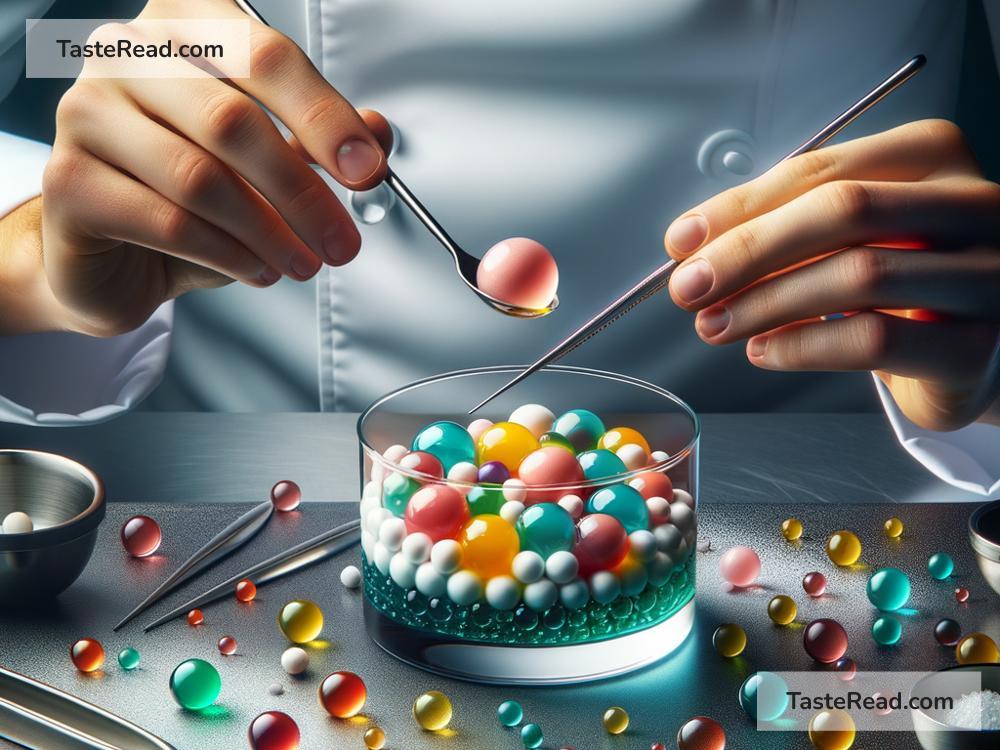The Science of Cooking with Molecular Techniques: Techniques and Tips
Cooking has come a long way from simply frying, grilling, or baking. Today, food enthusiasts and chefs are turning to science to craft dishes that are both delicious and innovative. This approach is called molecular gastronomy—a fancy name for techniques that mix cooking with scientific knowledge. While the name sounds complicated, the concepts and methods are surprisingly accessible, even for home cooks. In this blog, we’ll explore the basics of cooking with molecular techniques and share tips to get you started.
What Is Molecular Gastronomy?
Molecular gastronomy is the use of science to understand and manipulate cooking processes. It seeks to answer questions like: Why does bread rise? What makes food taste the way it does? And can we use science to create textures, flavors, or presentations that weren’t possible before?
It’s not about replacing traditional cooking but enhancing it by using scientific principles. For example, you might use molecular techniques to make foams, gels, edible spheres, or other visual and flavor effects that surprise and delight diners.
At its core, molecular gastronomy focuses on three areas:
1. Transformation: Changing the structure of ingredients to create new textures or forms.
2. Interaction: Exploring how heat, pressure, pH, and other factors affect flavors and ingredients.
3. Presentation: Creating dishes with a “wow” factor that surprises people when they eat them.
Luckily, many molecular techniques are easy to learn, and you don’t have to be a scientist to experiment in your kitchen.
Techniques in Molecular Cooking
Here are some popular molecular techniques that anyone can try:
1. Spherification
Spherification is a technique that turns liquids into spheres that resemble caviar. Imagine eating a spoonful of “lemon pearls” that pop in your mouth! This is done by mixing liquids with chemicals like sodium alginate and calcium chloride, which form a thin gel layer around the liquid.
Tip: Start with easy ingredients, like fruit juice or flavored water. The result not only looks cool but adds bursts of flavor to dishes.
2. Foams and Airs
Foams are an eye-catching way to present flavors in a light and airy texture. You can use tools like an immersion blender or special siphon canisters to create stable foams. The idea is to dissolve emulsifiers like lecithin into a liquid (say, carrot juice or coffee) and then aerate it.
Tip: Use foams to enhance toppings for soups, beverages, or desserts. For example, coffee foam can transform a regular drink into an unforgettable experience.
3. Liquid Nitrogen
Liquid nitrogen is a super-cold liquid often used to freeze food quickly or create dramatic effects like clouds of vapor. Chefs use it to make instantly frozen desserts, shatterable toppings, or even “smoky” cocktails.
Tip: While liquid nitrogen sounds exciting, it must be handled carefully because of its extremely low temperature (-320°F/-196°C). Partner with a trained expert or follow safety guidelines before trying this one.
4. Sous Vide Cooking
Sous vide (pronounced “soo veed”) is a method of cooking food in a vacuum-sealed bag at a precise temperature in water. This keeps food juicy and prevents overcooking. Steak cooked sous vide is tender and evenly cooked, while vegetables retain more flavor.
Tip: You don’t need professional equipment; many affordable sous vide machines are available for home cooks.
5. Reverse Spherification
This is a twist on spherification but works better for liquids that already contain calcium (like yogurt). Using chemicals in reverse order, you create spheres with liquid centers and gel exteriors that hold their shape longer.
Tip: Try reverse spherification for creamy ingredients. For example, you can make yogurt spheres to elevate a breakfast plate.
6. Gelification
Gelification involves turning liquids into gels or jellies using agents like agar-agar or gelatin. These gels can be sliced, molded, and layered in creative ways. Think of dishes like an intricate dessert cube made of multiple layers of colorful fruit gels.
Tip: Experiment with agar-agar (a vegan gel agent made from algae) if you’re looking for plant-based alternatives.
Tips for Getting Started with Molecular Cooking
If the idea of molecular techniques excites you, here are some tips to get started:
-
Start Simple: Don’t aim to recreate Michelin-star dishes on day one. Begin with one technique, like spherification, and gradually expand your skills.
-
Invest in Basic Tools: You don’t need to buy expensive equipment. Some essentials include a digital thermometer, immersion blender, sous vide machine, and silicone molds.
-
Read Up on Ingredients: Molecular cooking involves special additives like sodium alginate, agar-agar, and lecithin. Understanding what they do will help you use them effectively.
-
Experiment with Presentation: Use molds, plating techniques, or layering to make dishes visually stunning.
-
Learn from Experts: Watch online videos, read recipes, and follow chefs who specialize in molecular gastronomy for inspiration.
Why Molecular Cooking Is Worth Trying
Cooking with molecular techniques lets you turn science into edible art. It adds surprise and novelty to the dining experience. Imagine starting a dinner with smoky cocktails made with liquid nitrogen, enjoying a main course with perfectly cooked sous vide steak, and finishing with fruit “caviar” on dessert.
But beyond presentation, molecular techniques also allow you to control textures and flavors more precisely than ever. For example, sous vide cooking prevents the frustration of accidentally overcooking your favorite meat or fish.
Conclusion
You don’t have to be a professional chef or scientist to enjoy molecular gastronomy. With accessible tools, ingredients, and techniques, anyone can explore this exciting world of science-influenced cooking. It’s a chance to wow your friends and family with dishes that look and taste extraordinary. So, grab your apron, embrace your inner scientist, and start experimenting in the kitchen! Who knows? You might discover your new favorite method of cooking.


